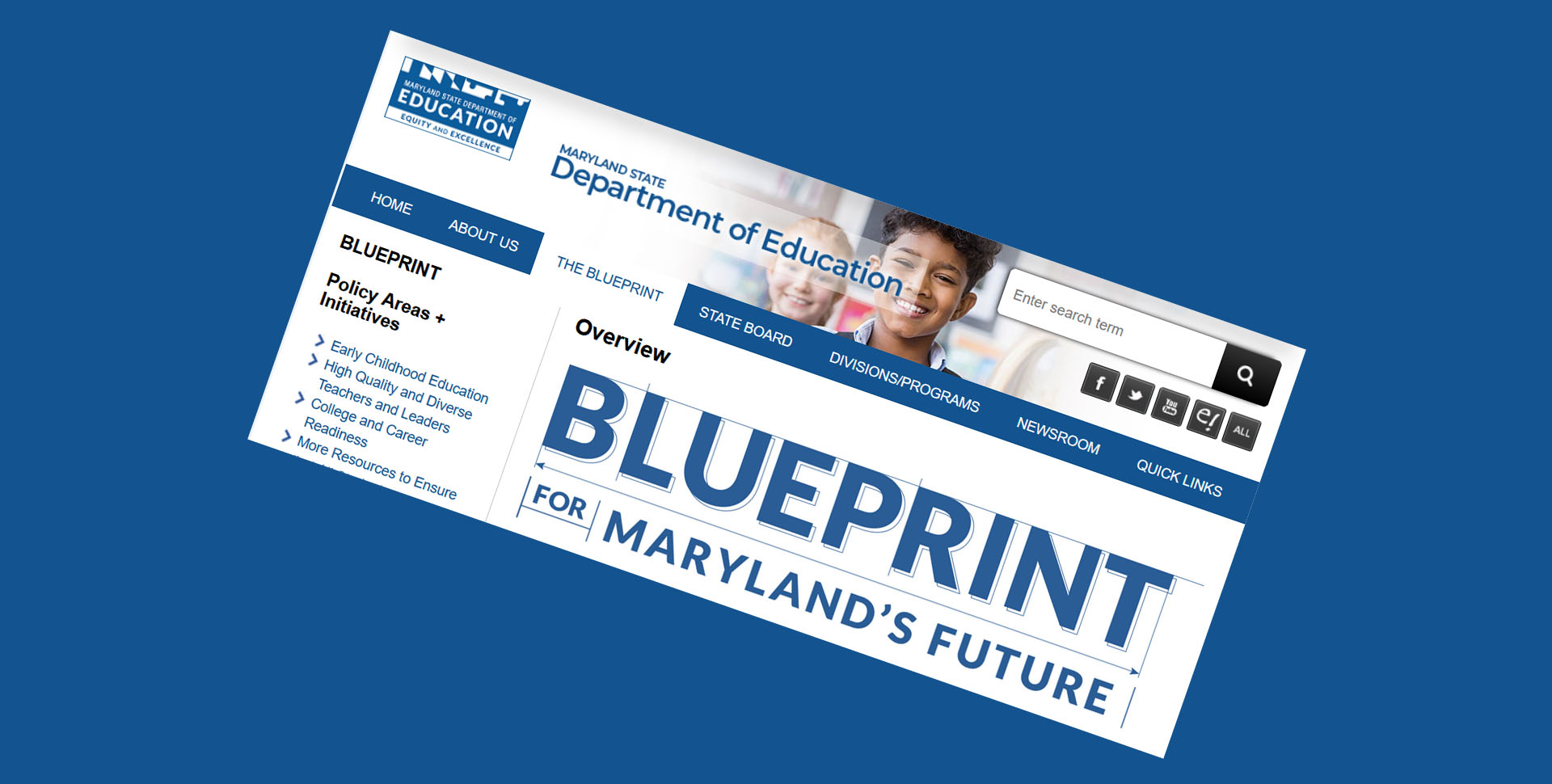One of the issues in Maryland’s state government and political arena that has generated recurring and intense debate, is funding for a ten-year educational improvement initiative known as The Blueprint for Maryland’s Future, (also referred to as the Blueprint or as Kirwan).
The goals for Kirwan include expanding participation in pre-kindergarten programs, more funding for schools with high concentrations of poverty, increasing pay and opportunities for teachers, and creating career pathways for high school students.
With regard to pre-kindergarten, the Kirwan plan has two specific and measurable goals.
First, in ten years, 80% of all 4-year-olds and all 3-year-olds are to be enrolled in pre-kindergarten programs, up from 40% in the 2023 school year.
Second, achieve the first goal by using a “mixed delivery system” using public school pre-kindergarten programs and private pre-kindergarten providers.
To date, achieving those goals has been elusive and may not occur on the current schedule.
A headline in one recent Maryland media outlet article was, “Even as spending rises, under half of Maryland 4-year-olds attend public pre-K.”
The article references reports from the National Institute for Early Education Research at Rutgers University. They note that Maryland lags behind seventeen other states enrolling kids in public pre-kindergarten programs, despite spending thousands more per child than it used to.
Last school year, 38% percent of 4-year-olds in Maryland were enrolled in state-funded pre-K programs, down one spot in the national rankings from the previous year.
Last year, 7% of 3-year-olds in Maryland were enrolled, also one spot below the previous year.
Rutgers reports those results occurred despite Maryland spending $358 million in state funds and an additional $3.8 million in federal pandemic recovery funds.
How much Maryland spent per pre-kindergartner, including federal recovery funds, is up $3,979 from the previous year.
With regard to the goal expecting greater involvement from private prekindergarten providers in an expanded pre-K program, current participation to date, is lower than expected.
In a survey of the state’s private childcare providers, only 12.9% of respondents said they plan to or were already involved in the pre-K program created under the Blueprint.
More than a third of the 256 respondents said they were unsure whether they will participate in the pre-K expansion and nearly 40% said they would not. 12.9% of the survey responders had never even heard of it, the same as the percentage of those who are already involved in it.
All this news is in addition to sobering reports from the General Assembly’s nonpartisan legislative budget analysts.
They are projecting that by next year, the state’s structural budget deficit will grow to $1 billion. In fiscal 2027, the last year of Governor Moore’s first term, it grows to $1.3 billion. A year later, it more than doubles to $3 billion.
That certainly helps explain Moody’s downgrading the state’s fiscal outlook from stable to “negative,” citing looming structural deficits driven by state funding needed for Kirwan.
In their report, Moody’s wrote, “The negative outlook incorporates difficulties Maryland will face to achieve balanced financial operations in coming years without sacrificing service delivery goals or adding to the weight of the state government’s burden on individual and corporate taxpayers.”
This news means the leadership of the General Assembly and Governor Moore need to engage further in bi partisan dialogue and deliberations on tough decisions regarding revisions to Kirwan.
That is not unprecedented.
Governor Moore and the general assembly leadership did that prior to the end of the 2025 General Assembly session. There was bipartisan agreement on and support for delaying a Kirwan mandate for local school districts to increase teacher collaborative time for curriculum planning, grading, and professional development outside of the classroom.
About that outcome Moore said, “Two years before I was sworn in as governor, the General Assembly passed a historic piece of education reform. But, like any big law of ambition and bold aspiration, we knew that there would have to be responsible adjustments and enhancements that had to be made.”
The revisions made on teacher collaborative time was a good step but is not nearly enough.
The governor must call for a special legislative session as soon as possible this year and well before the next regular ninety-day session that convenes in January 2026.
He must also ensure the sole focus for that special session is next steps for Kirwan.
The best outcome of that special session should be twofold.
Bipartisan approval to a pause on all state funding for Kirwan until a date certain in the future.
Bipartisan approval of a pause on all new mandates for local school boards, until a date certain in the future. They know best about student needs and limits on funds to meet those needs.
Maryland citizens and Maryland taxpayers deserve nothing less.
David Reel is a public affairs and public relations consultant in Maryland.



Write a Letter to the Editor on this Article
We encourage readers to offer their point of view on this article by submitting the following form. Editing is sometimes necessary and is done at the discretion of the editorial staff.